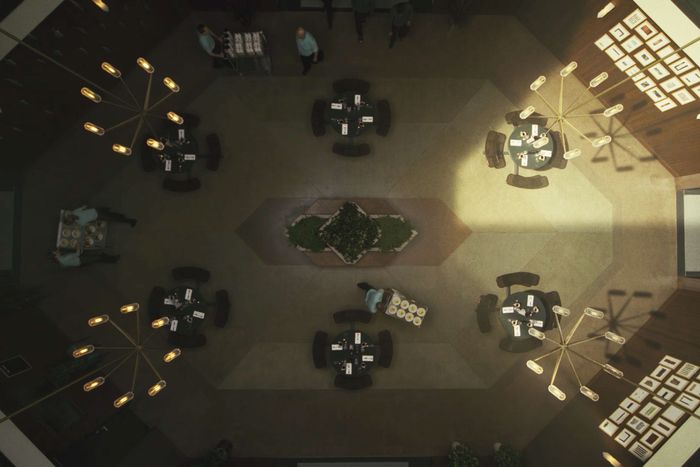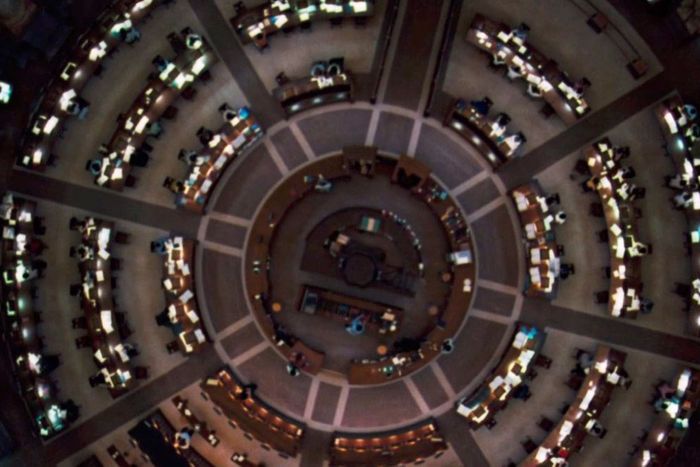
What a soldier is capable of believing: When his comrades tell him there’s a sequel to his favorite movie, Titanic, called Titanic Rising. That he hasn’t heard of it because it was independently produced. That it’s hard to acquire because James Cameron completely self-financed it but ran into copyright issues with the studio, which buried it, despite it being 10 times better than the original. That Jack and Rose foil a mafia plot below deck and spend a lot of the movie having sex with the captain—in fact, the ship hits the iceberg while Rose is cavorting with the captain. That the PX guys can’t get a copy because it’s too emotional for the soldiers.
What a soldier has a hard time believing: That his country wants to help him.
These aren’t the same soldiers. The former is extremely gullible and gets strung along by an elaborate, conspiratorial prank. The latter has been in the Homecoming program for a few weeks and has started to believe that there’s something fishy going on. But what leads this soldier, named Shrier, to suspect that he and his fellow veterans are not even in the state of Florida, despite the palm trees outside and the pineapple cobbler on their plates, speaks to the depth of his disillusionment. Shrier’s bullshit detector appears to be well-honed—on this point, Walter must concede—and it’s become implausible to him that the government would care enough about the mental health of its discharged veterans to set up this clinical apparatus to help ease them back into polite society. In his experience, the sacrifices soldiers make for their country are generally not reciprocated. They have to be serving another purpose.
Before Shrier goes ballistic in the mess hall, Sam Esmail’s direction goes a long way toward establishing the fastidious order that’s being disrupted. The episode’s opening shots emphasize the uniformity and routine embedded in the facility—and they’re reenforced later by essentially the same shots. The exercise room, the vending machines, the phone-free phone booths: All are framed in balanced, often symmetrical compositions, neat as the bunk Walter straightens up every morning. The most generous reading is that the Homecoming facility is designed to reflect the tidiness and routine of a military barracks, which might help ease the transition into normal life. But the most likely scenario is that this initiative is exerting a tremendous amount of control over its patients’ lives, and they’re maintaining a space that will function more like a laboratory than a home away from home.
The ambience in “Pineapple” brings the show deeper into Alan J. Pakula territory, steeped in the conspiratorial murk of Pakula’s classic ’70s thrillers All the President’s Men and especially The Parallax View, which is also about a secret, nefarious government program that preys on the susceptible. Esmail’s habit of shooting these spaces from above feels like a direct homage to Pakula, like the overhead shots of the mess hall, which are a hat tip to the Library of Congress shot in All the President’s Men.
“Pineapple” is a pivotal episode for Walter, because his loyalties are being pulled in opposite directions. On one end, his buddy Shrier—the person close enough to him to be set up as his roommate—is making the case for Homecoming as an elaborate scam being perpetrated on soldiers, who often already feel like they’ve been betrayed by their government. On the other, Walter’s relationship with Heidi is getting tighter. The two have established a nice rapport together. They laugh over Heidi overfeeding the fish. Walter shares the story of the Titanic Rising prank and nearly discusses his feelings about the death of the prankster, promising to revisit the issue at a later time. Through all this outside intrigue, a simple truth emerges: Walter wants help and Heidi wants to help him. When they’re in the room together, all else is noise.
For Shrier, however, the program has become a lost cause. And for the program, it’s looking like Shrier has become a lost cause, too. His meltdown in the cafeteria is made all the more piercing by the quiet, sterile order of the place, akin to talking in a library. It plants the idea in everyone else’s heads that their pineapple cobbler isn’t as delicious as it seems, and maybe they should start questioning their environment, too. The chilling final scene, with Walter getting escorted from Shrier’s room and Craig quietly locking the door from the outside, underscores Shrier’s belief that their commitment to the program is involuntary and non-therapeutic. But Walter, for now, wants to believe everything will be okay for both of them.
Session Notes:
• If you haven’t listened to Gimlet’s four “Start-Up” episodes on the making of the Homecoming TV show, they’ve been isolated and made available on the “Homecoming” feed. They offer good (and spoiler-free) information about how the sausage got made, starting with the surprising ease with which the Gimlet crew attached Esmail and Julia Roberts to the project. Amazon was so eager to produce the show that executives called them inside the car immediately after the pitch meeting.
• Having the doctor asking weird questions to satisfy the requirements of a vague “form” also suggests The Parallax View, in which the Parallax Corporation recruits members by subjecting them to a bizarre psych test. It’s also reminiscent of the doctor in The Big Lebowski, who’s “very good—and thorough.”
• Esmail’s decision to shoot the future in an iPhone rectangle is a showy distraction, and not really necessary to establish where we are in time. The podcast was bold in allowing the story to unfold in achronology and trusting listeners to follow along. The show would be better to trust viewers to do likewise.
• The detail of Thomas’ boss breastfeeding in her office before giving direction on his investigation is extremely specific, but hard to track. Perhaps “this can be done” is the point.
• Between this and The Old Man & the Gun, I’m on board for our mini-Sissy Spacekaissance.




